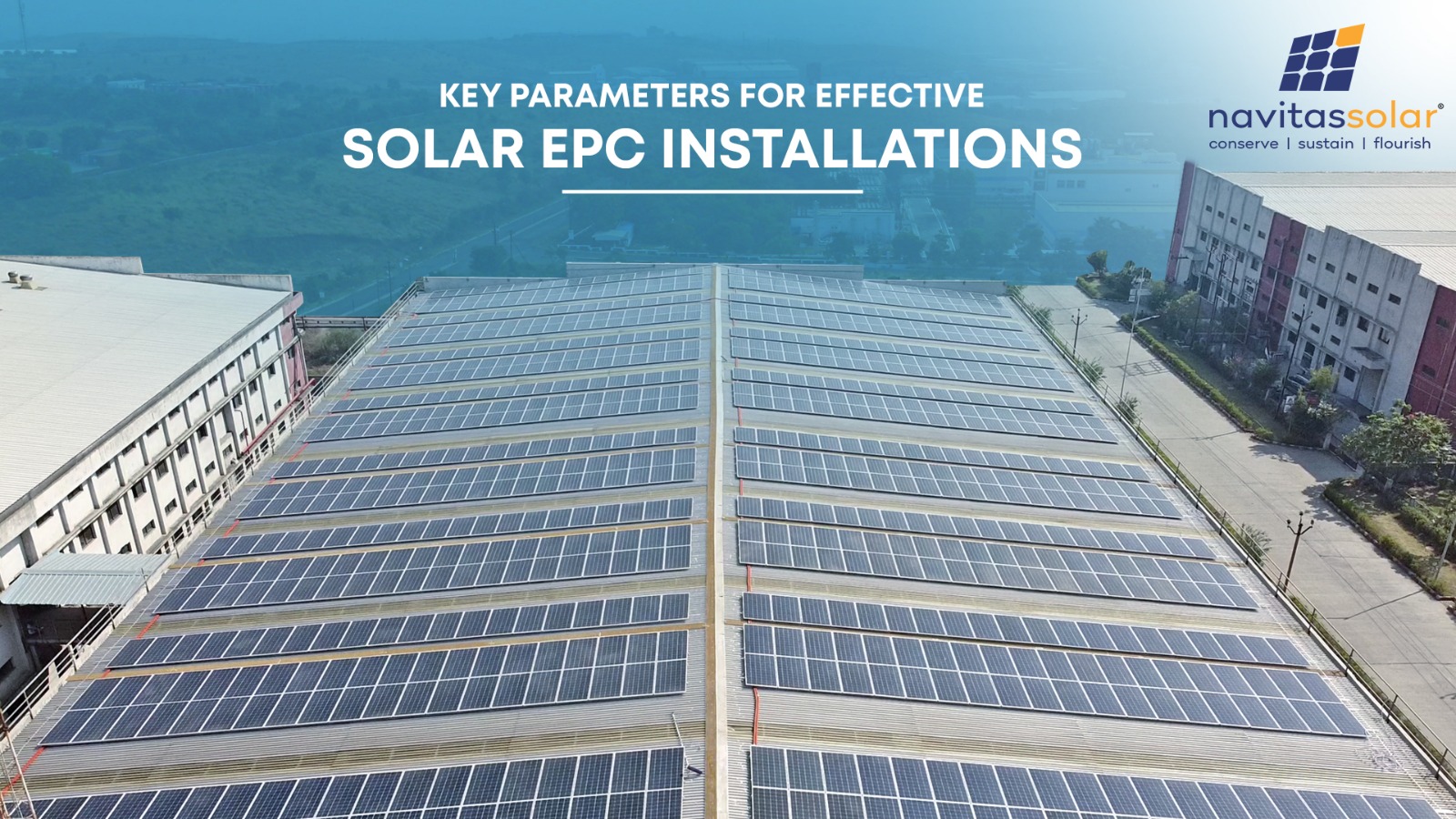Understanding terms used in the Solar EPC Installations
Navitas Solar stands as a prominent force in the solar panel manufacturing sector, known for its Solar Modules and services like Solar EPC (Engineering, Procurement, and Commissioning). As we try to understand how solar installations work, it is important to look at some important terms. These terms help us to understand details about solar projects installation as well as to evaluate a solar project’s performance. To grasp the deep insights about solar plant’s performance, efficiency, and overall impact, let us explore some important terms related to the solar project.
Let us find out some of the key parameters definitions and try to understand them in a simplistic way.
- Plant Load Factor: Plant Load Factor (PLF) refers to the ratio of the actual energy generated by a power plant to the maximum possible energy it could have generated during a given period.
- A solar power plant normally has a PLF of about 20%. This is because there is no sunlight at the nighttime and its intensity is low in the morning and evening. Whereas a thermal power plant can easily run at PLF of >80% if sufficient coal supply is there. Therefore, to replace 1 MW of thermal power plant, one may need at least 4-5 MW of solar power plants.
- High PLF indicates that the plant is operating efficiently and maximizing its output.
- Plant Availability Factor (PAF): PAF is the ratio of the actual operating hours of a power plant to the total scheduled operating hours during a given period. High PAF indicates that the plant is available and operating as planned which ensures of overall reliability of the plant. Lower PAF can lead to higher downtime that can result in revenue loss as well as higher maintenance costs.
- Many countries have regulations to maintain certain level of PLF and PAF in the power plants.
- Capacity Utilization Factor: It is the ratio of actual output produced from the solar power plant over the year to the AC plant capacity multiplied by no. of hours in the year. In other words, CUF signifies the ratio of actual production to the production capacity of a plant in a particular year.
- CUF that completely ignores the factors like degradation of the panels.
- Performance Ratio (PR): PR is a measure of the quality of a PV plant that is independent of location and it therefore often described as a quality factor.
- The performance ratio (PR) is stated as percent and describes the relationship between the actual and theoretical energy outputs of the PV plant.
- PR shows the proportion of the energy that is actually available for export to the grid after deduction of energy losses (e.g. thermal losses, soiling losses etc.) and of energy consumption for operation.
- The closer the PR value determined for a PV plant approaches 100%, the more efficiently the respective PV plant is operating. Practically, achieving 100% PR is not possible. High performance PV plants can however reach a performance ratio of up to 80%.
- PR can be used as a tool to compare different solar PV systems with each other even if they are located at different locations since all environmental factors will be taken into account.
- Deviations in the PR indicate a possible fault or problem in the solar PV plant.
- Solar Azimuth Angle: Solar azimuth angle is defined as an angle that describes the position of our solar panels with respect to north. The azimuth angle is the compass direction from which the sunlight is coming.
- The south is 180 degree to the north and hence if panels are facing true south, the azimuth angle would be 180 degrees. However, in many cases you may not be able to place your panels facing exactly true south due to certain restrictions.
- Tilt Angle: a tilt angle of a solar plant is the angle formed between the horizontal plane and the pitch of our solar panels. The sun’s angle moves greatly during the year, and as a thumb rule, the sun’s mean position is generally equal to the latitude of the respective location.
- Orientation: At solar noon, the sun is always directly south in the northern hemisphere and directly north in the southern hemisphere. India falls in Northern Hemisphere, so mostly sun is available directly over south facing panels. Therefore, the thumb rule in India is to set up solar panels in south facing direction. North and East directions in India can also work well but the direction to avoid solar plant’s facing is North.
With the focus on excellence and quality work, we are committed to delivering solar energy systems of the utmost quality, meticulously merging precision with sustainability. Grounded in a steadfast commitment to fostering innovation, Navitas Solar provides the best Solar EPC services. Join Navitas community and avail solar EPC Services now, be it residential, commercial or industrial. Our contributions hold substantial weight in facilitating the global shift towards adopting clean and renewable energy sources.


 Online | Privacy policy
Online | Privacy policy
Related Posts
You May Also Like
Bonito Series: Driving Innovation in…
Read MoreTOPCon Series: The Next Generation…
Read MoreValuable Points to Remember During…
Read MoreNavitas Planet Partners with Hysolwin…
Read MoreDriving Towards a Sustainable Future:…
Read MoreWhy Do Top-Grade EVA Sheets…
Read MoreBonito Series: Driving Innovation in…
Read MoreTOPCon Series: The Next Generation…
Read MoreValuable Points to Remember During…
Read MoreNavitas Planet Partners with Hysolwin…
Read MoreDriving Towards a Sustainable Future:…
Read MoreWhy Do Top-Grade EVA Sheets…
Read MoreBonito Series: Driving Innovation in…
Read MoreTOPCon Series: The Next Generation…
Read MoreValuable Points to Remember During…
Read MoreNavitas Planet Partners with Hysolwin…
Read More